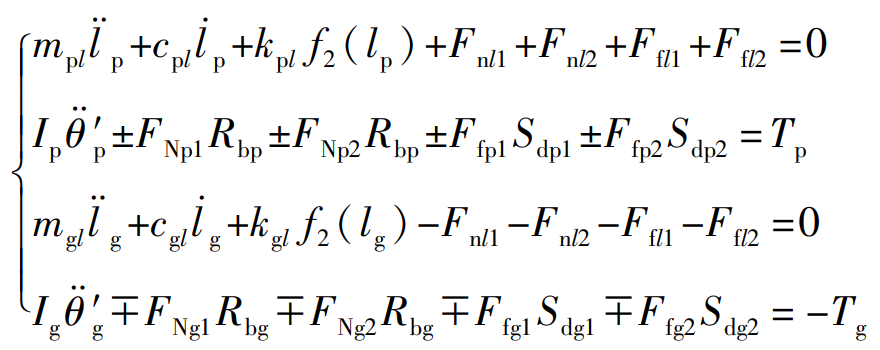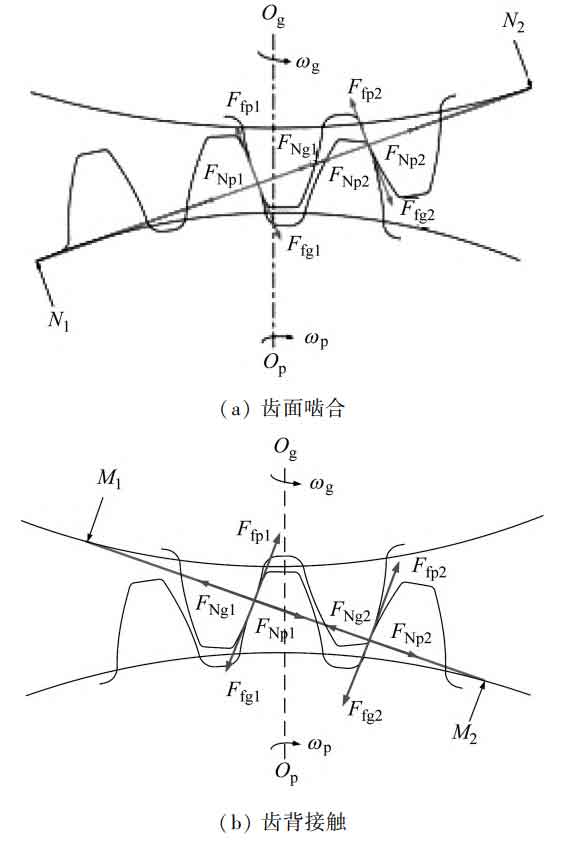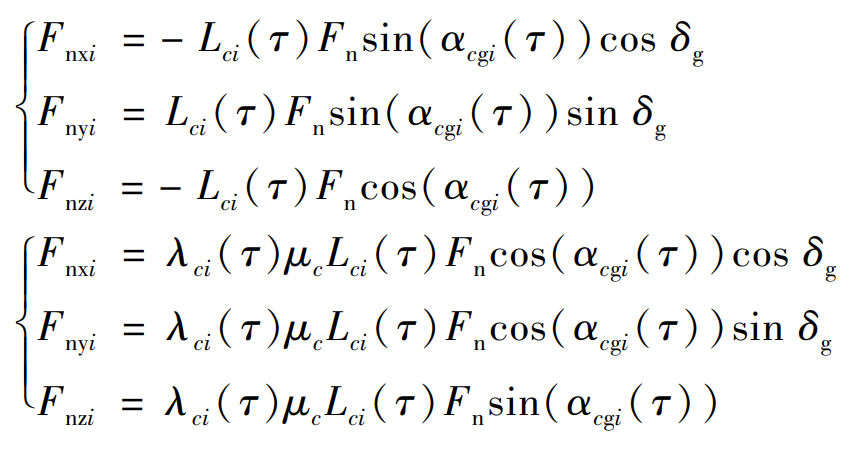The meshing of straight bevel gear pair can be regarded as the meshing of two equivalent straight bevel gears on the normal surface (back cone) of the meshing point. The tooth surface meshing state, tooth back contact state and stress are shown in Figure 4. When the tooth surface is engaged, the driving wheel pushes the driven wheel along the meshing line N1N2; When the tooth back contacts, the tooth profile of the driven gear tooth back pushes the driving gear along the meshing line M1M2. FNpi and FNgi are the positive pressure components along the meshing line N1N2 and M1M2 respectively, and Ffpi and Ffgi are the friction components perpendicular to the meshing line N1N2 and M1M2 respectively. According to the meshing principle of straight bevel gears, assuming that N1 → N2 or M1 → M2 is the positive direction of positive pressure, FNg1+FNg2 > 0 is the tooth surface meshing, and FNg1+FNg2 < 0 is the tooth back contact; When FNg1+FNg2=0, the gear teeth are disengaged. Then, Xn > Dn for tooth surface meshing, Xn < – Dn for tooth back contact, and – Dn ≤ Xn ≤ Dn for gear tooth disengagement. Based on the lumped mass method and Newton’s second law, the bend-torsion-shaft dynamic model of straight bevel gear transmission system in multi-state meshing can be obtained.

In the formula, the upper symbols in ± and ∓ indicate tooth surface engagement, and the lower symbols indicate tooth back contact. FNpi = FNgi = Lci ( τ) Fn 、Ffpi = Ffgj = λ ci( τ) Lci( τ)μ CFn (c=d, k), d represents tooth surface engagement, k represents tooth back contact, mjl (j=p, g; l=X, Y, Z) is the concentrated mass along the l direction, λ Ci (c=d, k; i=1, 2) is the friction direction coefficient of the ith meshing tooth pair, μ C (c=d, k; i=1, 2) is the friction coefficient of the gear tooth surface.

The components of the positive pressure and friction force of the straight bevel gear along the coordinate axis can be obtained from the formula, as shown in the formula.

